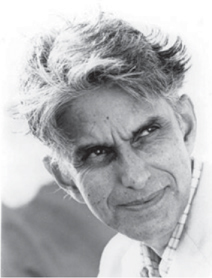Annals of Neurosciences, Volume 20, Issue 4 (October), 2013 by M.C Arunan & Gadiraju Nagarjuna

Obaid Siddiqi too was re-born more than once, if his research work of about 60 years in biology tells us anything. First, as a molecular geneticist: in analyzing the fine structure of gene and also in developing the concept non-sense codons by identifying the suppressor of non-sense mutations during the late 1950s and early 60s. Then, as a neuroscientist at the cutting edge areas, from 1970s onward; all the while clearly conscious of the importance and the suitability of the model organisms that he was choosing to work with. In earlier times if the model organisms were fungi (Aspergillus) and bacteria (E.coli), later it was the fruit fly Drosophila: all easy to maintain and very amenable to work with. In one of our last meetings, Siddiqi was effusive on our proposed program of introducing collaborative research at the undergraduate level vertically integrating with the schools and advanced research centers, across the country. When one of us raised the issue of poor facilities in the more than 26,000 undergraduate colleges in India, Siddiqi said leaving no scope for any pessimism: “sophistication should be in the mind; not in fancy gadgets or in laboratory space. Just look around; for a biologist, there can be innumerable lab settings; almost every where”, he added. He was also overtly supportive and keen to empower teachers at all levels. He famously said: “teachers are at a great advantage in comparison to us, scientists. At any given time, l have only a handful of students; you teachers have them in hundreds!”
https://annalsofneurosciences.org/journal/index.php/annal/article/view/545/2674
